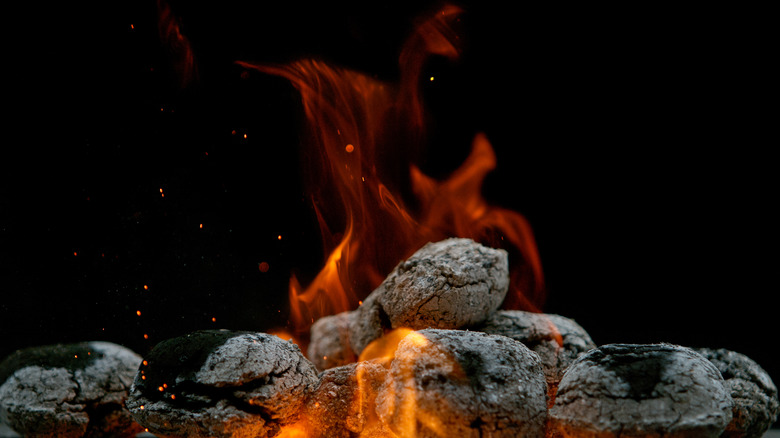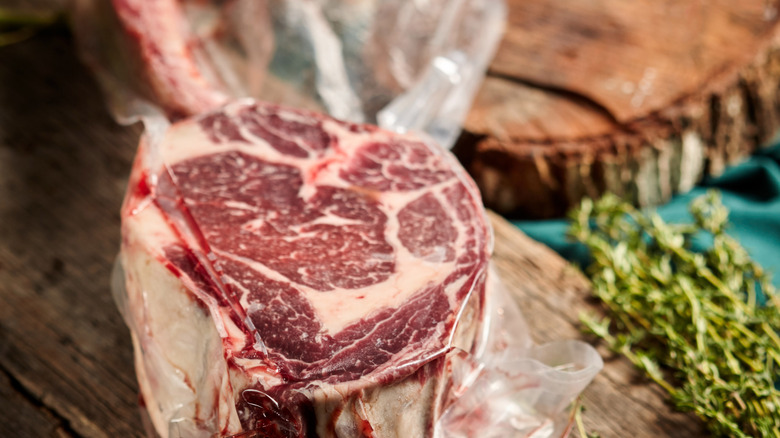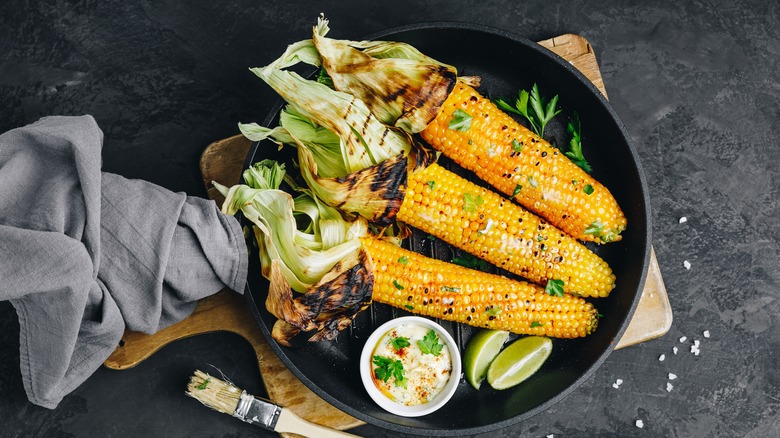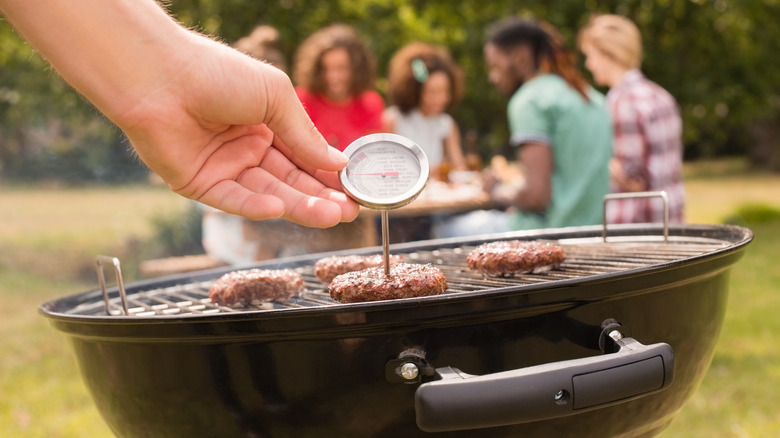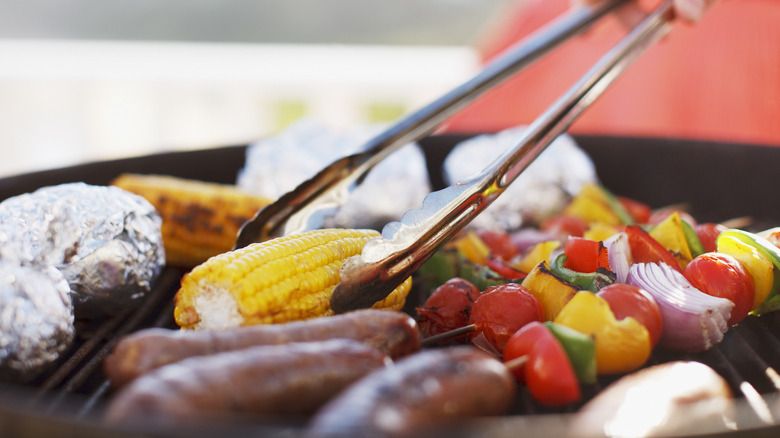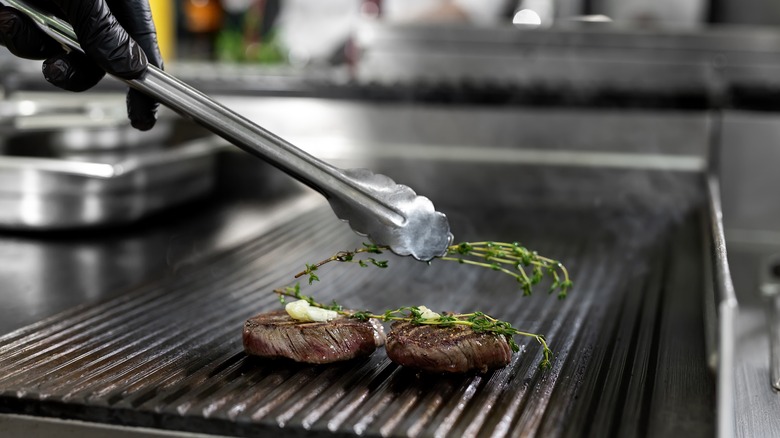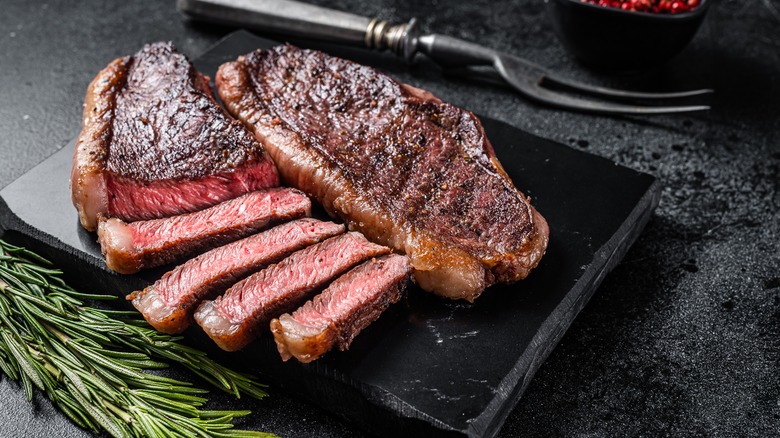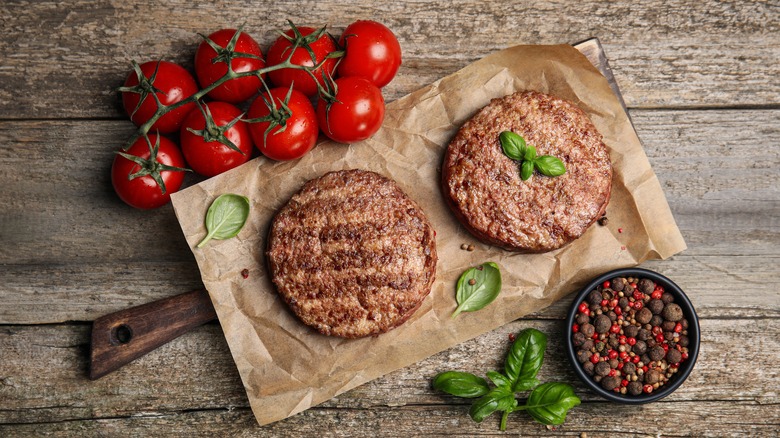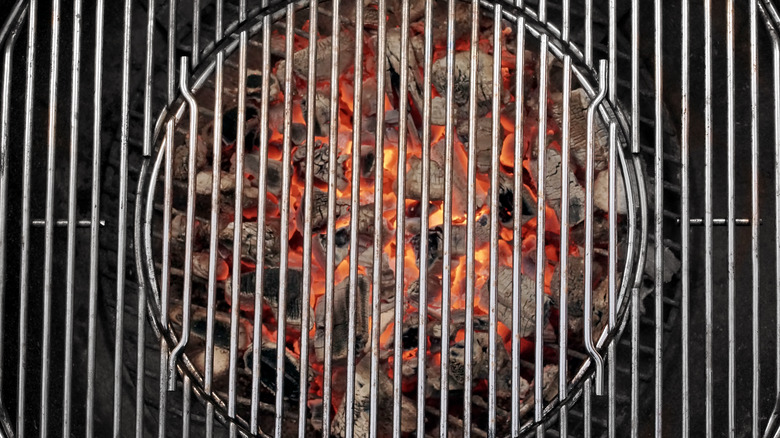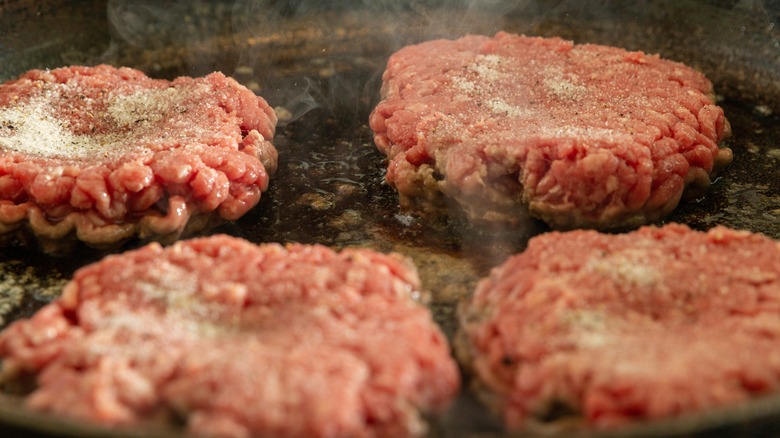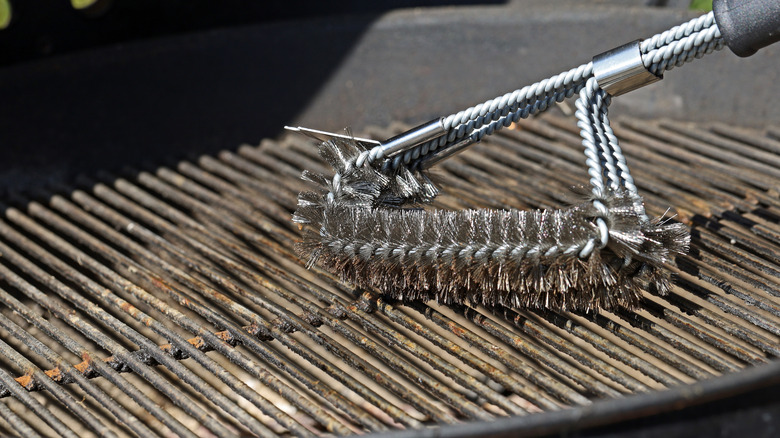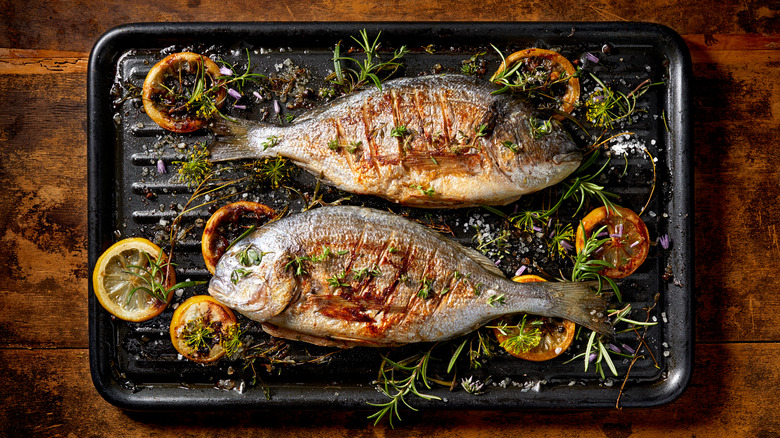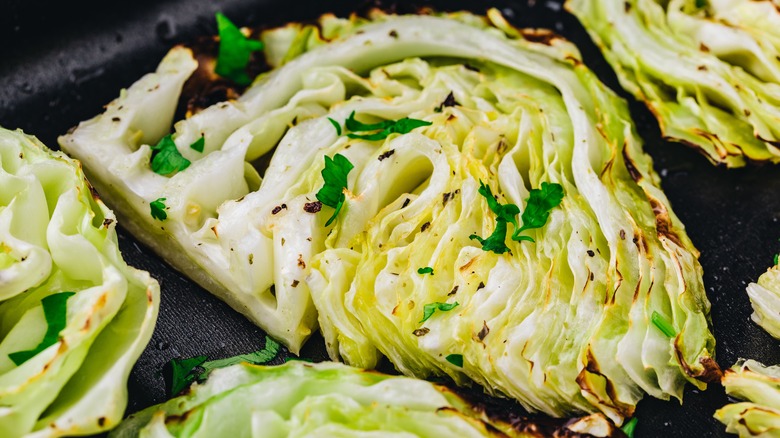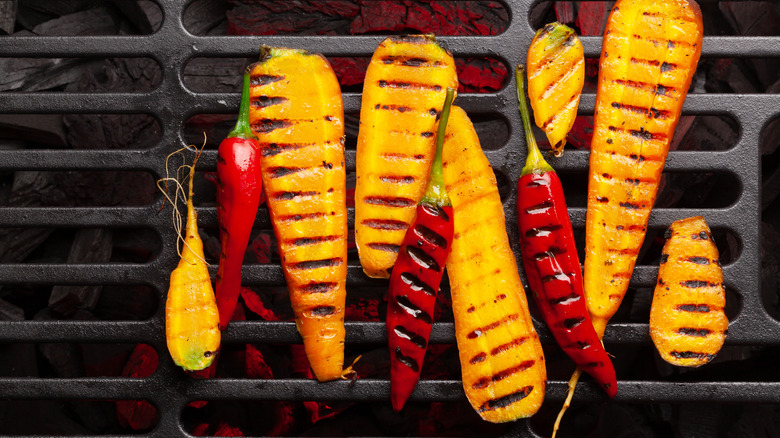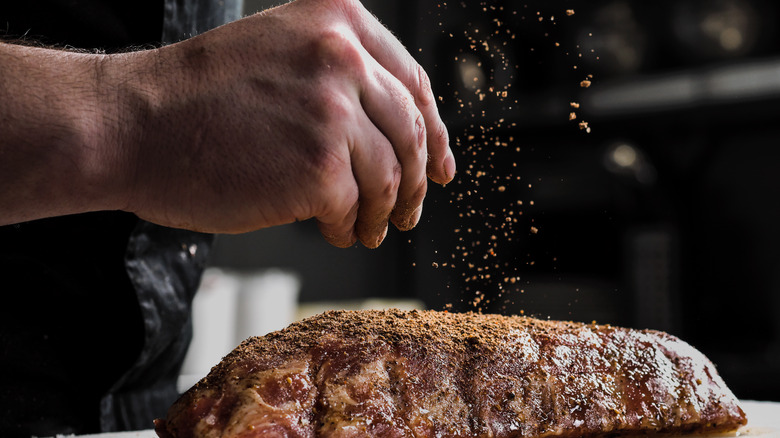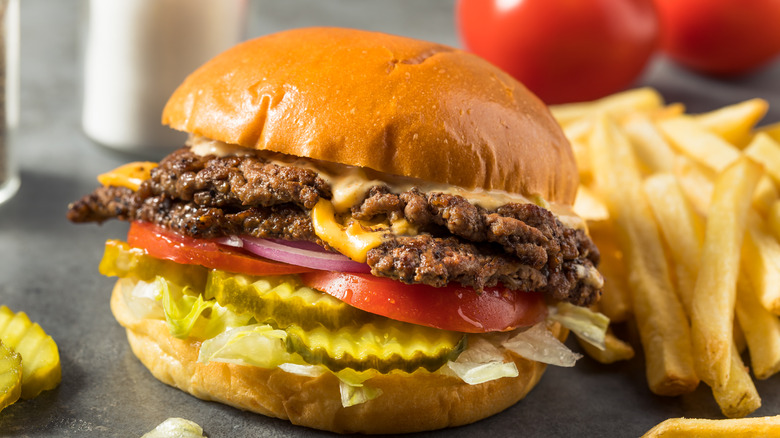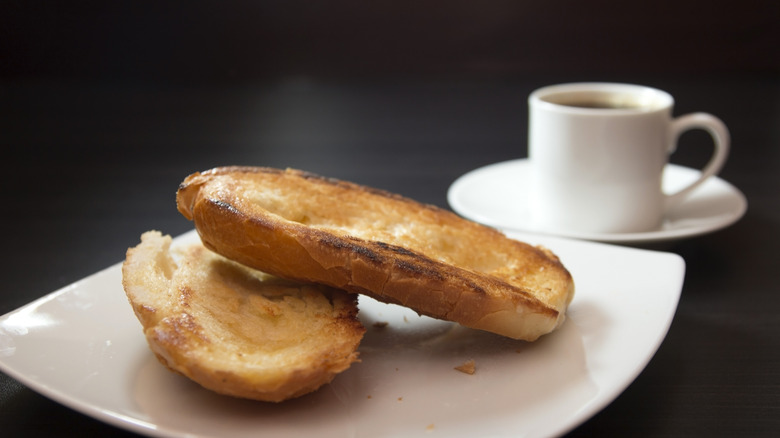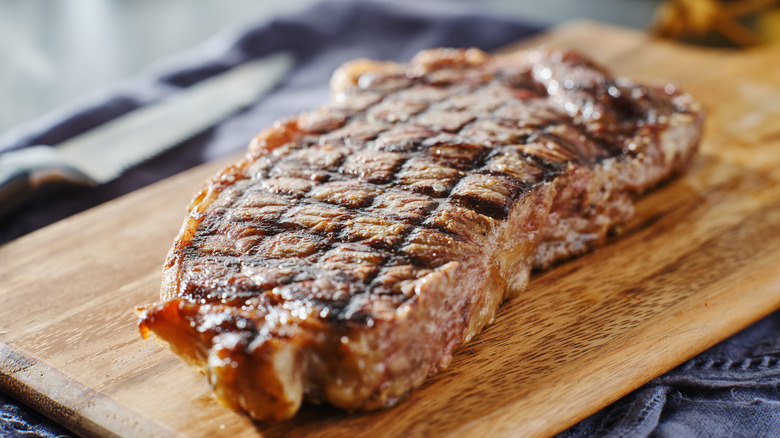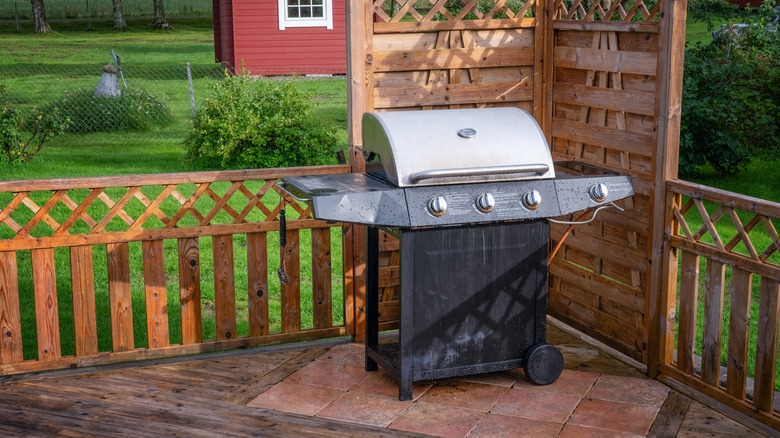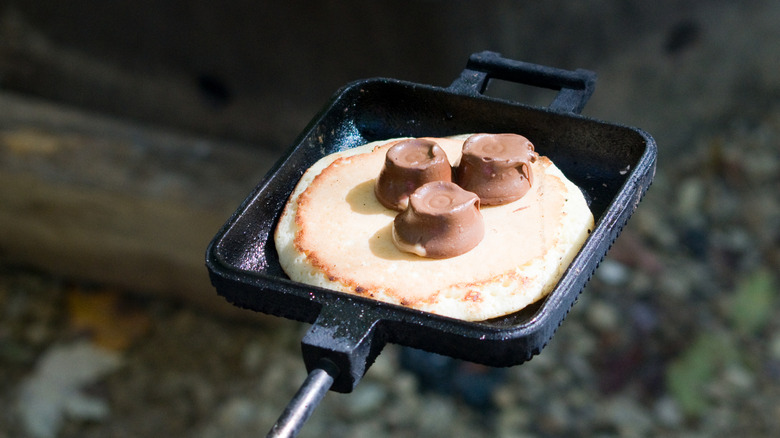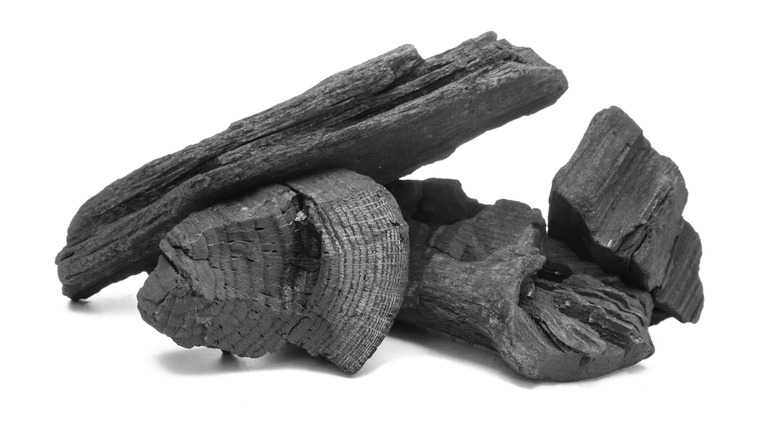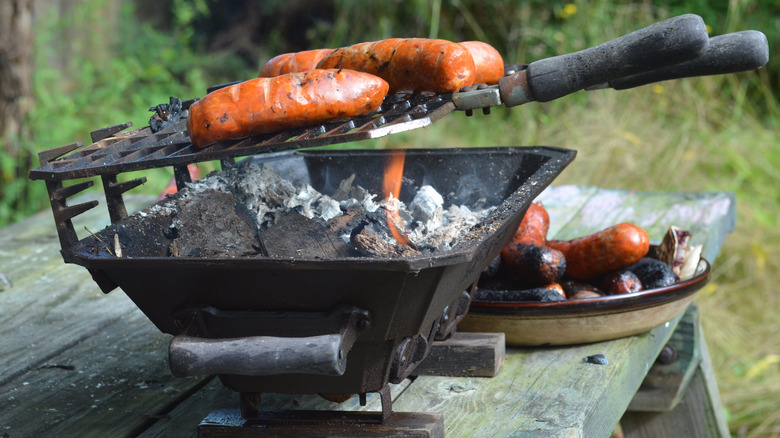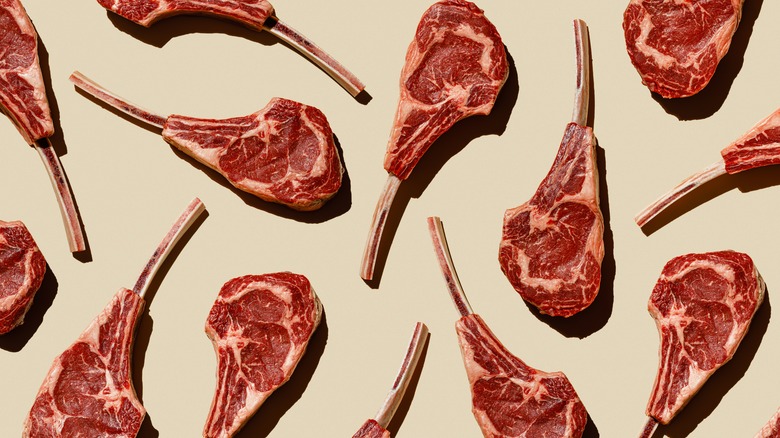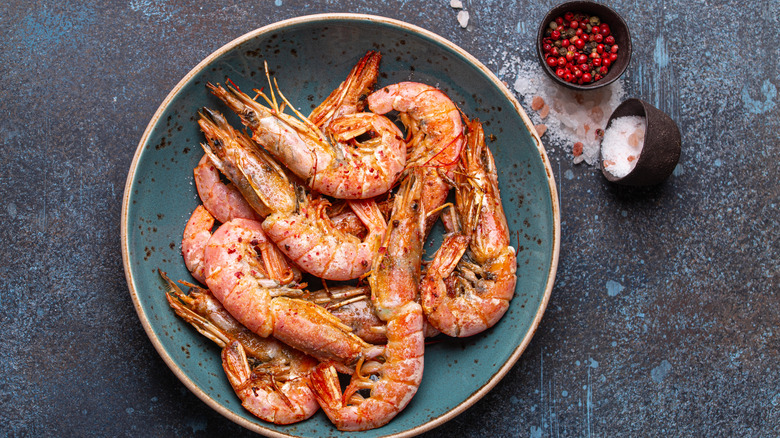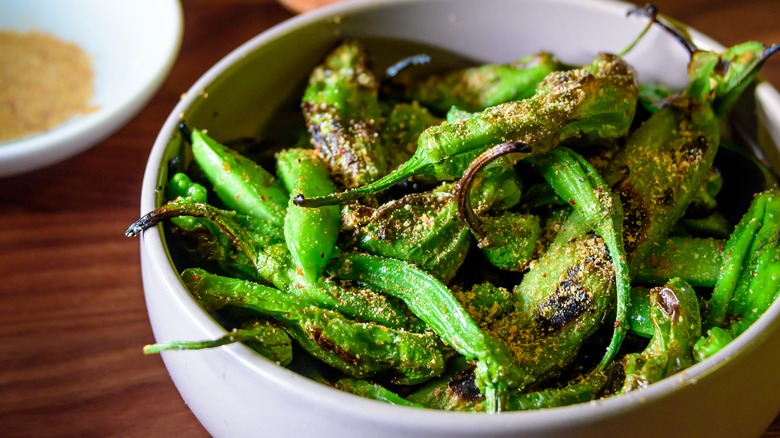25 Tips From Celebrity Chefs For All Your Grilling Needs
We love when it's time to start pulling out your charcoal bags, grilling tongs, and grill to start making many delicious summer foods outside. The grill is a place for many different proteins like beef, poultry, and shrimp, but it can also be used to develop a bit of flavorful char on your favorite veggies and fruits.
Grilling can be an intimidating experience at first. If you grew up in a family like ours, one person was "assigned" (most likely voluntarily) to operate the grill during summer barbecues and cookouts. As a result, many resources about how to properly and safely grill may have skipped over you. While the grill can seem like a mysterious or overwhelming cooking method, it is one of the best ways to impart more flavor to your food. You just have to be empowered with the knowledge to use it and maximize its utility. Here are some of the best celebrity chef tips to help you become more confident with grilling at home.
Give an adequate amount of time for the briquettes to heat up
It's fair to say that restauranteur Wolfgang Puck knows a lot about grilling. In an interview with Michelin, Wolfgang Puck shared his essential charcoal grilling tip: to light the charcoal briquettes about an hour before you plan to start grilling. Once you're ready to cook, you'll be grilling over indirect heat rather than open, hot flames.
This indirect heat is important because it will cook the insides of whatever you're grilling rather than just scorching the food. You can further control the heat of your grill by placing the coals on the sides of the grill; this will create several smaller heat zones rather than a single concentrate flame.
Always pre-season and rest your meat
A good steak is all about the seasonings. Chef Wolfgang Puck recommends seasoning meat for the grill when you light your briquettes — about an hour before you cook. This buffer time gives the salt and seasoning enough time to penetrate the steak. Puck also recommends rubbing the steak in oil before grilling to prevent it from sticking.
Gordon Ramsay is another celebrity chef who recommends letting the meat sit awhile before cooking it. He recommends preparing burgers the night before if you're planning a barbecue to increase firmness. Then, when you're ready to cook, chef Ramsay recommends letting the patties sit outside the fridge for a few minutes, reducing the risk of improper heating when you grill them.
Grill the corn with the husk still on
One of the most popular grilled vegetables is grilled corn. You can spruce up a summer corn-on-the-cob in many different ways, including street corn style with a butter and cotija cheese crumble or topped with a classic sweet cream butter and salt-and-pepper combo.
There is just as much variation in toppings as in preparation methods for grilled corn. Chef Bobby Flay's tip for perfect grilled corn is to remove the silks but leave the husks intact. After replacing the husks, Flay soaks his corn in water for 20 minutes to prevent the husks from setting aflame when they hit the grill. Then, the chef grills his corn for about 10 minutes until juicy and crunchy.
Use a meat thermometer to avoid overcooking your proteins
Food safety and grilling need to go hand-in-hand. But going too far past the "safe temperature" threshold while grilling may mean your meat is overcooked. According to barbecue expert Chris Lilly, one of the biggest grilling mistakes to avoid is overcooking your proteins. Lilly recommends always using a meat thermometer to determine when meat is done cooking. After it reaches the safe temperature threshold, it should be moved off the heat as quickly as possible to prevent it from drying out.
Lilly recommends setting up a two-zone fire if you're cooking multiple proteins at once. This allows you to move the meat from the searing area to the cooler area, where the inside of the protein can finish cooking.
Make sure your grill is hot when you're cooking veggies
Barbecue professional and chef Michael Symon has a lot of advice to give when it comes to grilling. One of Symon's ultimate barbecue and grilling tips is always starting with a hot grill when cooking vegetables. Then, like Chris Lilly, Symon recommends having a two-zone fire to move the vegetables to once they're finished charring. This is particularly useful for thicker vegetables, like eggplants, that may require a low-and-slow approach to grilling.
Another tool Michael Symon recommends having nearby is a grilling basket. This tool, which Symon notes is especially valuable for thin spindly vegetables like asparagus, means you're "flipping a whole basket as opposed to 20 pieces of asparagus," thus increasing consistency.
Timing is everything when you flip your steaks
Chef Gordon Ramsay appreciates a good sear on a steak and one with a buttery, soft pink interior. His ultimate tips for searing the perfect steak include allowing the steak to rest for ten minutes at room temperature before grilling to soften the muscle fibers on the steak. Then, he rolls the steak in seasoning before placing it in the pan. He notes that it is important to lay the steak away from you for optimal control and to prevent oil from splashing onto your forearms.
It is critical to avoid flipping the steak until it has developed some color on the other side, Ramsey claims. In addition, you'll want to see some of the caramelization of the side of the steak before you decide to take the plunge and flip it.
Slice your steak with care
Once your steak is off the grill, you'll have to take a couple of extra steps to ensure it is perfect for you to slice into. Gordon Ramsay recommends finishing your steak in the pan with a pad of butter to develop a decadent crust and toasty flavor. Then, the steak should be rested to ensure that all of the juices soak back in and cook the inside of the meat; this should be around 10 minutes per pound of meat.
After searing your perfect steak and allowing it to rest, Ramsay recommends cutting a steak no thinner than a half-centimeter thick to preserve its juicy texture.
Don't be afraid to amp up your burger seasoning
Burgers are a staple menu item at many of Gordon Ramsay's restaurants. His top tips for perfectly seasoned burgers include rolling the burgers in seasoning during the preparation stage, when the burgers are cooking, and on the bun. To maximize the flavor of his burgers, Ramsay also advocates brushing butter over the burgers as they cook.
While classic butter is always an option, Ramsay recommends getting creative and making your compound butter to schmear on the burger. Whatever butter you choose, you can rest assured knowing that the Maillard reaction will help develop a toasty, caramelized sear on the outside of your patty.
Use a charcoal grill instead of a gas one
Everyone has their opinions when it comes to grilling — celebrity chef Bobby Flay included. Flay prefers charcoal grills to gas grills because they can enhance the flavor of whatever you choose. The chef especially enjoys hardwood charcoal for its unique woodsy flavor.
One of the downsides of lighting a charcoal grill, Flay acknowledges, is keeping it lit while cooking. One of his secrets to keeping the fire underneath this grill going is to use a chimney starter. This device includes a metal tube filled with newspaper or lighter cubes and charcoal. Once the charcoal is lit, it can be easily transferred to the grill.
Add a dimple to prevent your burgers from spreading on the grill
If you've ever grilled your burgers, you know the challenge of shaping them. When your patties hit the heat, their shape changes into something more globe-like than disc-shaped. You wanted burgers, not meatballs — right?
Bobby Flay's tip for perfectly shaped burgers is the same as many other burger enthusiasts: dimple the center of the burger on both the top and bottom sides. This will counteract some of the shrinkage from the outer rim of the burger and prevent the patty from rising in the center.
Always start with a clean grill
It might seem like a no-brainer to keep your mise en place clean and organized when cooking. Chef Dale Talde recommends keeping an organized and well-stocked space when you're grilling outside; this will prevent how many times you have to open and close your screen door to get back inside. This includes having small things like a garbage can and plate always at the ready.
After a long season off from grilling, Talde recommends starting on the right foot by cleaning off your grill. He notes that all you have to do for a gas grill is "get that thing so hot that nothing will live on it" and scrape it clean. Then, you should be ready to get grilling!
Oil and season your grill before cooking fish
The exact grilling method you use depends on what you're preparing. Bobby Flay's important tips for grilling fish include always starting with a clean grill before brushing the fish with oil. This will create a protective layer between the fish and the grill, reducing the risk of sticking.
To further reduce the sticking potential, Flay always begins with an amply hot grill; a three to five-minute preheat should get the grill to where it needs to be. Once your fish is adequately cooked, it should pull away from the grill.
Try grilling cabbage
Cabbage might not be on the top of the list for the fruits and veggies you want to try grilling, but according to chef Michael Symon, it should be. You should start grilling cabbage because the grill produces a fantastic char. He recommends quartering a whole head, covering it in butter and seasoning, and placing it cut side down on the grill.
You can eat your grilled cabbage plain from the grill or serve it with a light dressing and other vegetables in a wedge salad. If you're not a fan of cabbage, you can also grill romaine.
Braise carrots and other root vegetables before grilling
Grilling vegetables can provide a delightful char and crunch, but not all vegetables can be put directly on the grill. Alex Guarnaschelli's advice for grilling carrots and other root vegetables is always to braise them briefly before grilling. The braising process, which involves cooking food in a moist environment at a comparatively lower temperature than steaming or boiling, will infuse more moisture into the carrots and make them soft and supple.
You'll want to combine the veggies with liquid (water, stock, or broth), fat (oil or butter), and some aromatic herbs and cook them until tender. Then, you're good to grill them up.
Get creative with your spices
At its core, grilling is all about two things: impeccable taste and texture. Chef Michael Symon's go-to barbecue seasonings are inspired by the tastes and flavors of Texas barbecue. He notes that his favorite barbecue seasonings are the classic salt and pepper, but he also indulges in savory and smoky spiced like Aleppo pepper and smoked paprika.
In addition, a relatively unusual type of spice that finds its way into his grilling is celery seed. This spice has distinct herbal notes and is often found in deli potato salads, stews, seafood bakes, or the classic Bloody Mary.
Use oiled butcher paper for the perfect smash burger
For those unfamiliar, a smash burger is a burger that has been pressed super thin and grilled in its own juices. For the perfect smash burger texture, Michael Symon uses oiled butcher paper between the patty and the smasher. This prevents the meat from sticking to the utensil.
The chef also recommends adding the cheese directly to the burger after you flip it; this will maximize the amount of time the cheese has to ooze all over the patty. With this hack, you'll have an In-N-Out style burger ready in just under a few minutes.
Upgrade your bread by grilling it
You can grill almost anything, bread included. Instead of rushing for your toaster, celebrity chef Michael Symon recommends grilling bread indoors with only a few tools.
To make his grilled bread, Symon starts by slicing the sourdough with the same thickness as your pointer finger. Then, add olive oil to both sides of the bread. From there, you'll need a grill pan (perfect for those grill marks), cast iron, or frying pan to cook your bread. Cooking your bread indoors gives you a bit more control over the heat and allows you to use your finger (or spatula) to press it down.
Let your steak sit at room temperature before eating it
You've probably already heard about the importance of resting some types of meat before cutting. The star of "Bizzare Foods," Andrew Zimmern, recommends waiting for the steak to cool and return to room temperature for about 45 minutes after grilling. This time allows the juices and fat to seep back into the muscle, thus tenderizing the steak.
This steak cooking tip will ensure that you have delicately soft steak every time — plus, it will give you some spare time to prepare your side dishes (we recommend mashed potatoes).
Keep the lid on for grilling poultry and meats
How do you know when to use the lid of your grill? Bobby Flay's grilling rule is to keep the grill open for quick-cooking ingredients like shrimp and vegetables and leave the lid on for foods that take longer, like poultry and steak. Closing the lid on your grill can help prevent moisture from escaping and drying out your proteins.
So how do you decide which kinds of proteins to leave covered? Flay recommends keeping the lid closed for any proteins that take more than ten minutes to cook, like thick-cut steaks.
Use a pie iron for easy grilling
Let's face it — not all food shapes are conducive to grilling. One of chef Michael Symon's favorite cooking gadgets for summer barbecues that can help with this common grilling issue is the pie iron. Not to be confused with a cast iron baking dish for pies, this grilling utensil is either hinged or open and allows the user to place their favorite ingredients inside and cook it over an open flame (or a gas stove).
In a video he shared on Instagram, Symon uses his pie iron to make an Italian sandwich complete with two slices of bread, cheese, meat, and relish in a well-greased pie iron. He then seals the edges and cooks for three minutes on each side.
Grill with natural lump charcoal
Everyone has their favorite cooking fuel. Andrew Zimmern likes to grill with natural lump charcoal because it's made of pieces of wood burned down to make charcoal.
Charcoal briquettes, which are popular for grilling, are made of sawdust pressed down into shapes and may include more additives and lighter fluid. Although the ignition on these briquettes is faster, they often lend a harsh, bitter taste and smell. If you're grilling food directly on the coals, Zimmern recommends using the natural lump charcoal for both purity and for a hotter, less regulated burn — and as a result, a much better taste.
Invest in a tabletop hibachi
Do you need yet another grilling apparatus in your garage or storage shed? If it's a tabletop hibachi grill, of course you do.
Andrew Zimmern uses hibachi grills to elevate his outdoor parties and grilling experience. The Japanese konro hibachi grills are one of his outdoor essentials for entertaining because they allow you to grill table-side and will enable you to spend more time with your guests. To increase the pleasant smoky flavor on these grills, Zimmern swaps out charcoal briquettes for binchotan charcoal. This type of wood is made from kiln-fired oak wood, meaning that it burns cleaner at higher temperatures than other charcoal types.
Grill bone-in steaks for more flavor
Bone in or out? If you're Andrew Zimmern, bone-in steaks are your go-to for grilling. He believes this method is preferable because the bone imparts more flavor to the meat than a boneless cut.
On his website, Zimmern explains that the bone's flavor actually works its way into the flesh and enables the food to cook a bit slower, thus bringing more of a charred look and taste to the meat. His favorite steaks to work with include marbled, thick-cut steaks because they cook long enough to develop a delicious, crispy crust on the outside.
Always grill your shrimp with the shell on
The decision of whether to leave the shell on your shrimp is seafood's version of "bone in or out?" Celebrity chef Andrew Zimmern likes to grill shrimp with the shell on for the same reason why he's a proponent of bone-in cuts: the flavor.
Leaving the shell on your shrimp also acts as a protective layer between the flame and the flesh. He notes that leaving the shell on is especially important for large shrimp and prawns, which need a little extra cooking time to get the perfect juicy texture. It might be more work for eaters, but the flavor is worth it.
Toss your shishito peppers right on the coals
Andrew Zimmern isn't afraid of a bit of heat, either. The "Bizarre Foods" host has traveled far and wide to sample spice, but one of his favorite ways to enjoy peppers is at home. His tip for preparing perfectly blistered shishito peppers is to toss them directly onto the coals.
Zimmern only uses hardwood coals since, as we mentioned earlier, briquettes contain chemicals like lighter fluid that would otherwise make the peppers unsafe to eat. Instead, he leaves the peppers on the coals for two to three minutes before dousing them in lemon juice and salt.
Static Media owns and operates Tasting Table and Mashed.

